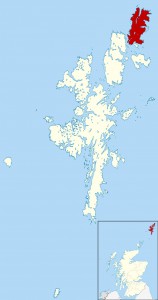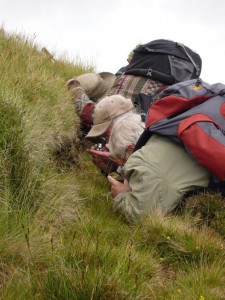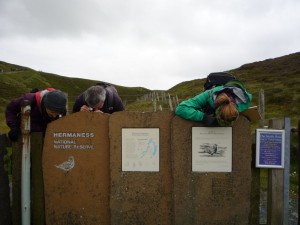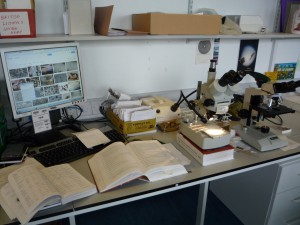
This month for me was really dominated by the incredible opportunity I had to join the British Lichen Society on their annual summer meet, which this year was held on the island of Unst, in Shetland. Predominantly made up of rock and bog, white beaches and rugged coastline, this 12 mile long by 5 mile wide island is spectactular and ia a relatively unsurveyed island as far as lichens are concerned.
As I could literally count the number of trees on the island on my hands and feet, the majority of lichens we were looking at and surveying were found on rock, boulders, cliffs, peat and soil. Most of my lichen identification up to this point in my traineeship has been of those that grow on trees, so this really was a huge eye-opener for me, and a fantastic opportunity to discover the strange and wonderful world of even less obvious lichen species. I learn’t the art of ‘thinking like a lichen’, and beginning to get my eye in for spotting dead looking bits of heather, or grotty looking bits of scrub or soil, or a hidden dry underhang or crack in a rock that when scrutinised turns out to reveal a gem of a lichen.
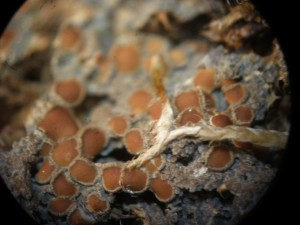
Protopannaria pezizoides – affectionately known as the ‘lentil bake’ lichen – found here on the ground amongst low vegetation
We visited a range of different habitats, which was great as it enabled me to further expand my taxonomic and fieldwork skills. And being in the company of some of the top professional and experienced lichenologists in the UK, I got to really learn from some of the best!
The two National nature Reserves in Unst, Hermaness and the Keen of Hamar were extraordinary sites and are the habitat for not only a variety of interesting lichens but also some 25,000 pairs of puffins each summer, with the opportunity for some close-up views of literally tens of thousands of Gannets, alongside Guillemots, Puffins, Razorbills, Kittiwakes, Fulmars.
We didn’t always get very far very fast…
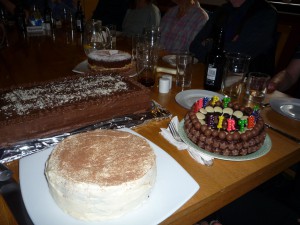 …but we did get to eat a lot of cake!
…but we did get to eat a lot of cake!
In the evenings I had the opportunity to further my microscopy skills by identifying specimens collected during the day in the field, with expert advice on hand, and we had two evening sessions looking specifically at how to identify the notoriously difficult Cladonia genus.
All in all an incredibly informative, knowledge expanding, fascinating and jolly time was had. Buoyed up by this momentous start, the rest of July flew by, which included more specimen identification and running drop-in lichen activities at two brilliant events – the Royal Botanic Garden Family Garden Party event and Dawyck Garden BioBlitz.

